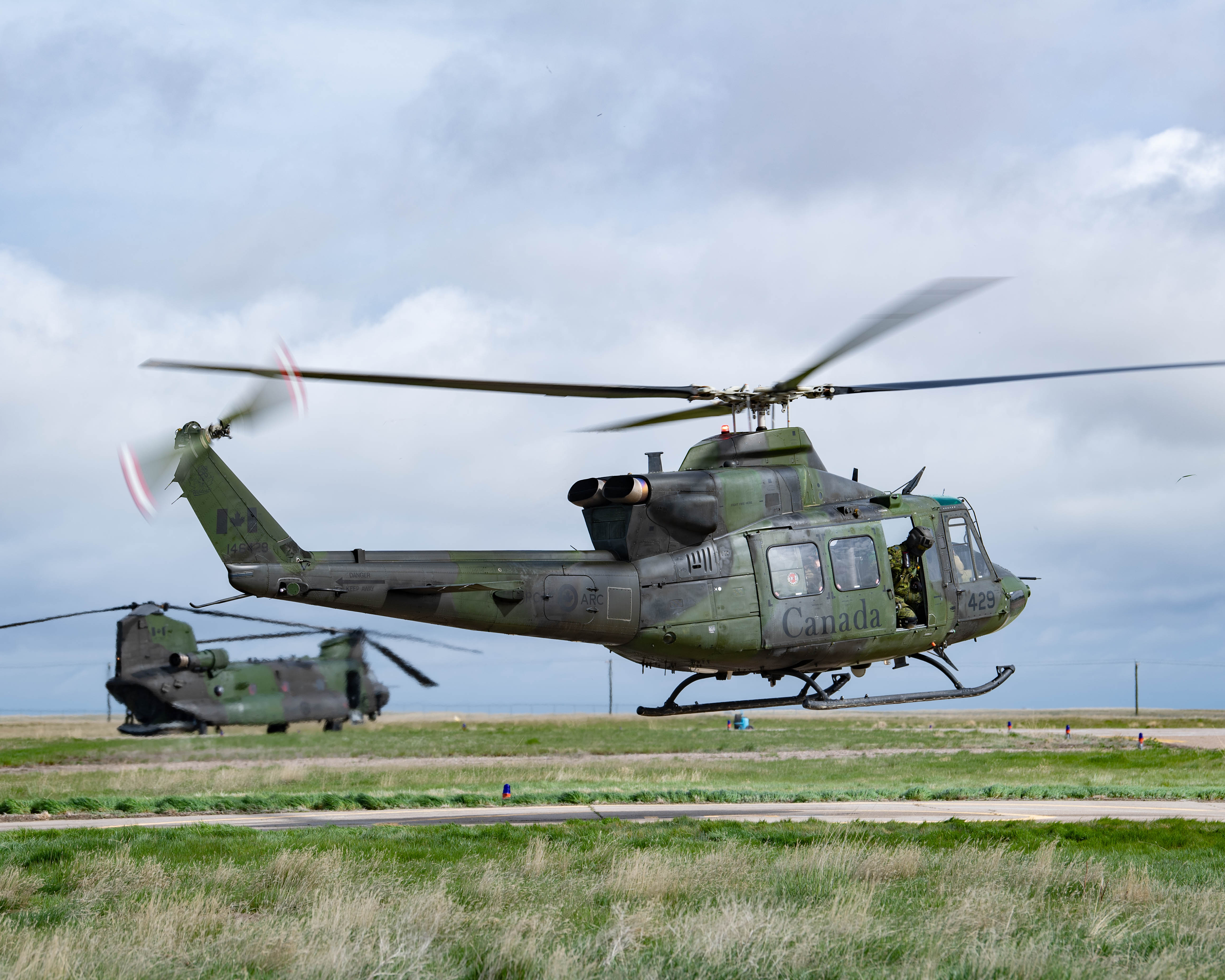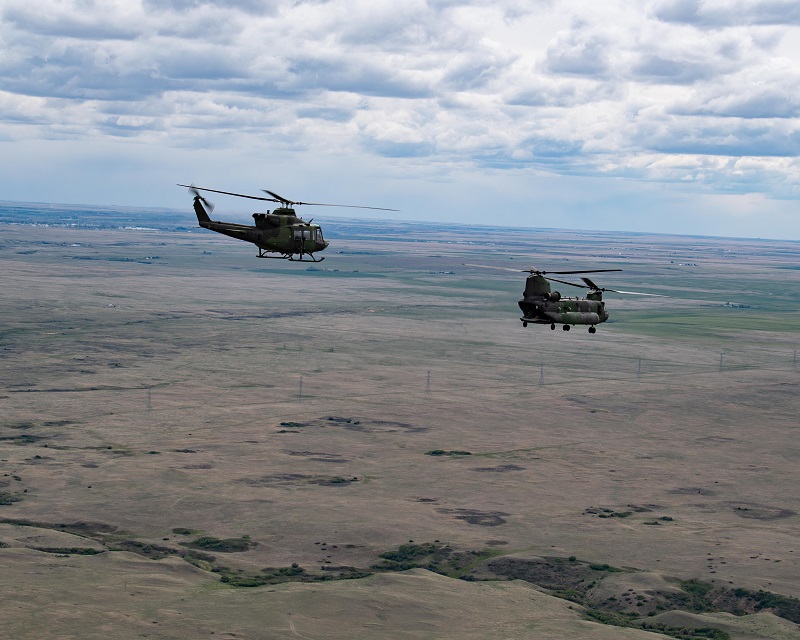Collaboration ensures mission success
News Article / November 17, 2021
1CAD - Public Affairs
To ensure member readiness, 78 members of various 1 Wing Squadrons boarded a CC-130J Hercules in Saint-Hubert, Quebec, and Pembroke, Ontario, all bound for Medicine Hat, Alberta. The personnel from 403, 427, 430, 438 and 450 Squadrons had one mission: to lead and support the Basic Tactical Aviation Course (BTAC) at Canadian Forces Base (CFB) Suffield, where they joined vanguard and logistics elements already in place.
Students and instructors from 408 Tactical Helicopter Squadron in Edmonton, Alberta, also joined the group in Suffield to make it a full 1 Wing exercise. With the addition of a platoon from 3rd Battalion, Princess Patricia’s Canadian Light Infantry, 152 Canadian Armed Forces members in all were required to conduct this important Force Generation course. The course certified six new pilots as Tactical Flight Leads on the CH146 Griffon and two more on the CH147F Chinook.
Extra preparation and adaptation was required to ensure flight operations ran smoothly since this was the first time Suffield hosted a BTAC. One of the challenges was logistics: with no Royal Canadian Air Force (RCAF) element at CFB Suffield, all tools and equipment had to be positioned in advance. Technicians worked outside to keep up with the fast pace of the course. Weather conditions ranged from 35 °C to -5 °C and included strong winds and snow. In the end, the elements had minimal effects on the training of the BTAC as all personnel remained agile and flexible. Their excellent readiness to operate in austere conditions ensured mission success.
For their part, BTAC candidates put a lot of effort into developing the skills necessary to lead two-aircraft missions. The course is comprised of a distance learning module, followed by academic residency and a flying phase. The three-week practical flight phase in the field confirms and solidifies all learning up to that point. Students learn a variety of tactical aviation tactics, techniques and procedures, as well as 1 Wing Standard Operating Procedures. Students use the Aviation Mission Planning Cycle (AMPC) to prepare for and accomplish their mission.
Canadian Army collaboration helps bring scenarios to life and greatly increases training realism. This collaboration is an essential learning opportunity for both the candidates and the ground troops who support the course, and further improves Air/Land integration in a very practical and tactical way.
Lieutenant-Colonel Stéphane St-Onge, commander of 438e Escadron tactique d'hélicoptères (ETAH) and BTAC 2101, thanked all members who participated directly and indirectly in this common effort. Their hard work and professionalism helped to adapt quickly to a new environment and despite the ongoing COVID-19 pandemic. The RCAF continues to train its members to ensure they are operational and efficient.


